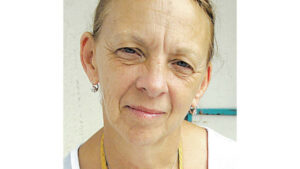Louisiana House of Representatives District 16
Region 16 refers to a multi-state area in the South-Central United States. It includes parts of Oklahoma, Texas, Arkansas, and Louisiana. With its diverse landscape ranging from rugged mountains to lush wetlands, Region 16 has a unique culture and history.
Geographically, Region 16 covers about 45,000 square miles across the four states. It includes both rural farmland and metropolitan cities like Tulsa, Oklahoma City, and Shreveport. The climate is generally humid subtropical, with hot summers and mild winters.
Demographically, Region 16 has a population of over 5 million people. It is ethnically diverse, with large white, African American, Native American and Hispanic/Latino populations. The major industries include energy, aerospace, healthcare, manufacturing and agriculture.
History of Settlement and Development in Region 16
Native Inhabitants and Early Exploration
Region 16 has been inhabited for thousands of years. The early native peoples included the Caddo, Wichita, Choctaw, and Cherokee tribes. These tribes were forcibly relocated in the 1800s.
The first European explorers arrived in the 1500s, including Hernando de Soto. But widespread European settlement did not occur until the 1800s after the Louisiana Purchase.
Key Historical Events in Region 16
Some major historical events in Region 16 include:
- 1803: The Louisiana Purchase opened the region to American settlement.
- 1830s: Thousands of Native Americans were forcibly relocated West along the Trail of Tears.
- 1859: Oil was discovered, launching the oil boom.
- 1930s: The Dust Bowl brought ecological disaster to the Great Plains.
- World War II: Military bases and war industries were established.
- 1995: The Oklahoma City bombing was a devastating terrorist attack.
The Economy of Region 16
Major Industries
The economy of Region 16 relies on several major industries:
- Energy: Oil and natural gas extraction is a huge industry, especially in Oklahoma and Texas.
- Aerospace: Major employers include Boeing and Lockheed Martin.
- Healthcare: Prominent medical centers and research hubs.
- Manufacturing: Key manufacturing includes transportation equipment.
Agriculture in Region 16
Farming and ranching are also important economic drivers. Major agricultural outputs include:
- Cattle ranching
- Wheat, corn, and soybeans
- Cotton, hay, and peanuts
- Poultry and eggs
Tourism
Popular tourist draws include:
- Urban centers like Oklahoma City and Tulsa
- Cherokee tribal sites
- Museums and performing arts venues
- Outdoor recreation like hiking and fishing
Government and Politics in Region 16
Local Government Structure
Local governments include county commissions, city councils, school boards, and tribal governments. Larger cities have mayoral offices.
Recent Election Trends
Recent elections show a mix of Republican and Democratic support across the region. Urban areas lean Democratic while rural areas favor Republicans.
Key Political Issues
- Energy policy
- Agriculture subsidies and regulations
- Infrastructure funding
- Native American sovereignty
- Urban revitalization
Diverse Culture of Region 16
Ethnic Diversity
Region 16 is home to a mosaic of ethnic groups, including:
- White
- African American
- Native American – Cherokee, Choctaw, Creek
- Hispanic/Latino
- Asian American
Cuisine
The cuisine blends Southern, Native American, and Southwestern influences. Iconic dishes include chicken fried steak, chili, cornbread, tacos, and wild game.
Arts and Music
The arts reflect cowboy culture, Native American heritage, and urban vibrance. Country, folk, blues and jazz thrive, along with classical and theater.
Major Cities and Attractions
Top Cities by Population
The largest cities in Region 16 are:
- Oklahoma City, OK
- Tulsa, OK
- Fayetteville, AR
- Norman, OK
- Broken Arrow, OK
Top Tourist Destinations
Popular attractions include:
- The Cowboy and Western Heritage Museum
- Cherokee Heritage Center
- Woolaroc Museum and Wildlife Preserve
- Crystal Bridges Museum of American Art
- Oklahoma City National Memorial
Parks and Natural Landmarks
Outdoor highlights include:
- Ouachita National Forest
- Wichita Mountains Wildlife Refuge
- Tallgrass Prairie Preserve
- Ozark National Forest
- Hot Springs National Park
Education in Region 16
K-12 Schools
The K-12 school system includes traditional public, charter, private and tribal schools. Larger districts are in Oklahoma City, Tulsa and Little Rock.
Higher Education
Notable colleges and universities include the University of Oklahoma, Oklahoma State, University of Arkansas, University of Tulsa and Oral Roberts University.
Adult Education
Adult education and workforce development programs are available through community colleges, vocational schools, and online programs. These help train the region’s workforce.
Infrastructure of Region 16
Transportation
- Air: International airports in Oklahoma City and Tulsa
- Rail: BNSF and Union Pacific are major carriers
- Road: Interstates 35, 40, and 44 intersect, along with U.S. Routes 62, 64, 70, 271, and 412
Healthcare
Major health centers include OU Medicine, Integris Health, Arkansas Children’s and the Veterans Health Care System.
Utilities
- Electricity: Providers include PSO, SWEPCO and OG&E
- Water: Municipal water systems serve major cities
- Natural Gas: Suppliers like CenterPoint and Oklahoma Natural Gas serve the region
Conclusion
In summary, Region 16 is a vibrant area with a diverse economy, cultures, and landscape. It has played an important role in Native American, Western frontier, and American history while building thriving metropolitan hubs today. The region balances its traditional agricultural roots with emerging industries and technological innovations. With collaborative leadership, Region 16 is poised to continue prospering while preserving its cherished heritage.
FAQ
What are the major cities in Region 16?
The largest cities are Oklahoma City, Tulsa, Fayetteville, Norman, and Broken Arrow.
What native tribes traditionally lived in Region 16?
Major native peoples included the Caddo, Wichita, Choctaw, Cherokee, Creek, and Osage tribes.
What are some top tourist attractions in Region 16?
Major attractions include the Cowboy and Western Heritage Museum, Cherokee Heritage Center, Crystal Bridges Museum, and Oklahoma City National Memorial.
What colleges and universities are located in Region 16?
Prominent schools include the University of Oklahoma, Oklahoma State, University of Arkansas, University of Tulsa, and Oral Roberts University.
What are some examples of the region’s music and cuisine?
Iconic music includes country, folk, blues, and jazz. Popular foods include chicken fried steak, chili, fried catfish, cornbread, and wild game.








